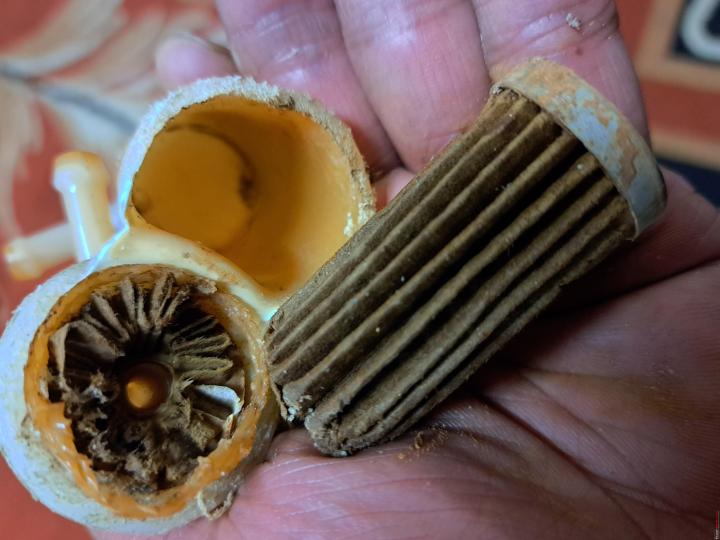News
DIY: My findings after dissecting the used fuel filter of my motorcycle
This is a 3000 km ONLY run fuel filter. Absolutely no performance issues, it was doing its duty as it was supposed to to the nick, until I intervened due to my untreated OCD.
BHPian VijayAnand1 recently shared this with other enthusiasts.
Notwithstanding the Ethanol/Methanol dilemma for us petrolheads, christening it as Gasohol, E5, E10 and soon E20 and god forbid not E85 - which led me to ponder what exactly does this fuel transpire to the innards staring with feed system, fuel pump, fuel filter, fuel hose, the injector.
During the process of changing the fuel filter on one of my motorcycle, was piqued to delve a little deeper as to what exactly does this humble filter do in keeping the crud out of the system or the effects of E5, E10 for that matter.
Being late night of a drill this was, with the good side of me saying "why not" while the wifey side of me protesting, "why would you". For once, I decided to cut the noise, sneak in silently, get the toolbox, hacksaw and start hacksawing far from fallout..
Filters both OEM, before opening up the damned one:
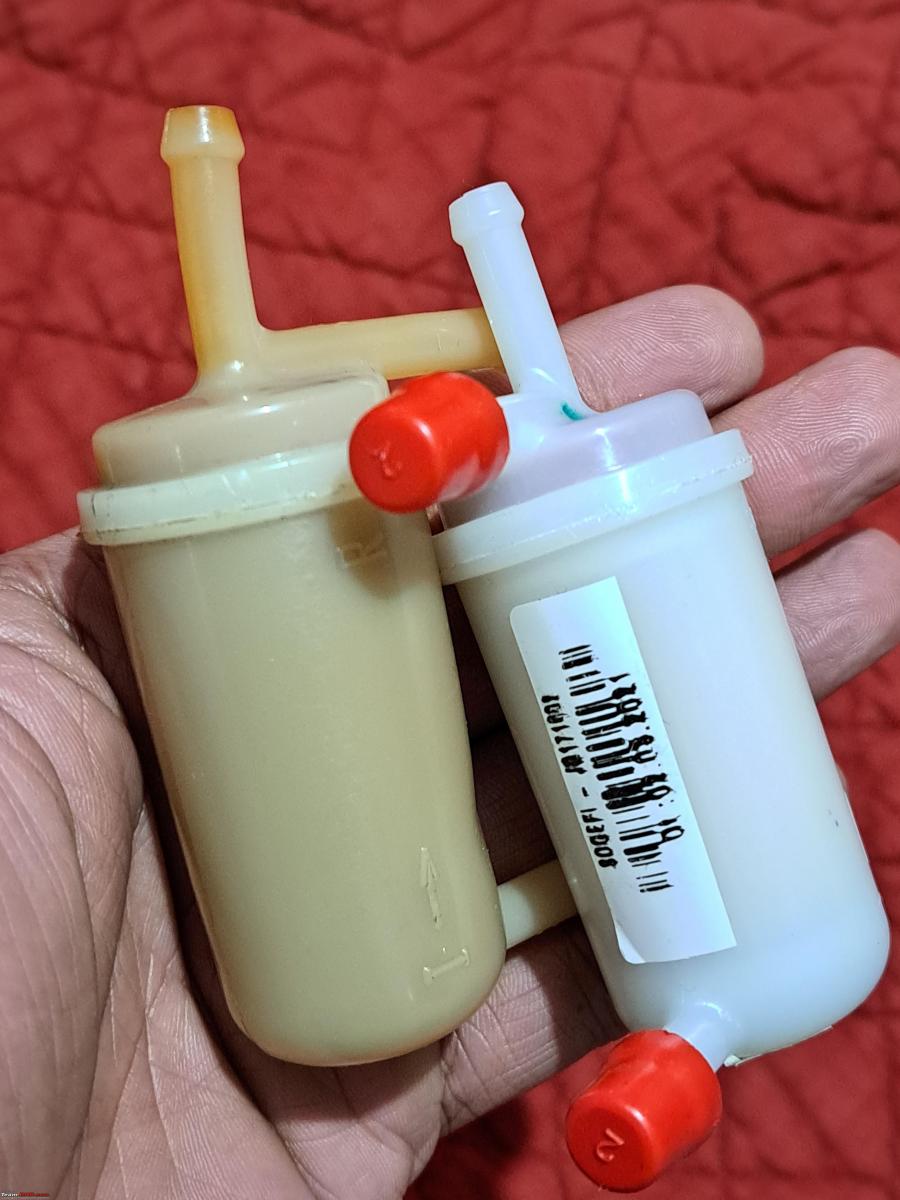
After an arm pump and 15 odd mins later... I find this... Aghast was the sight:

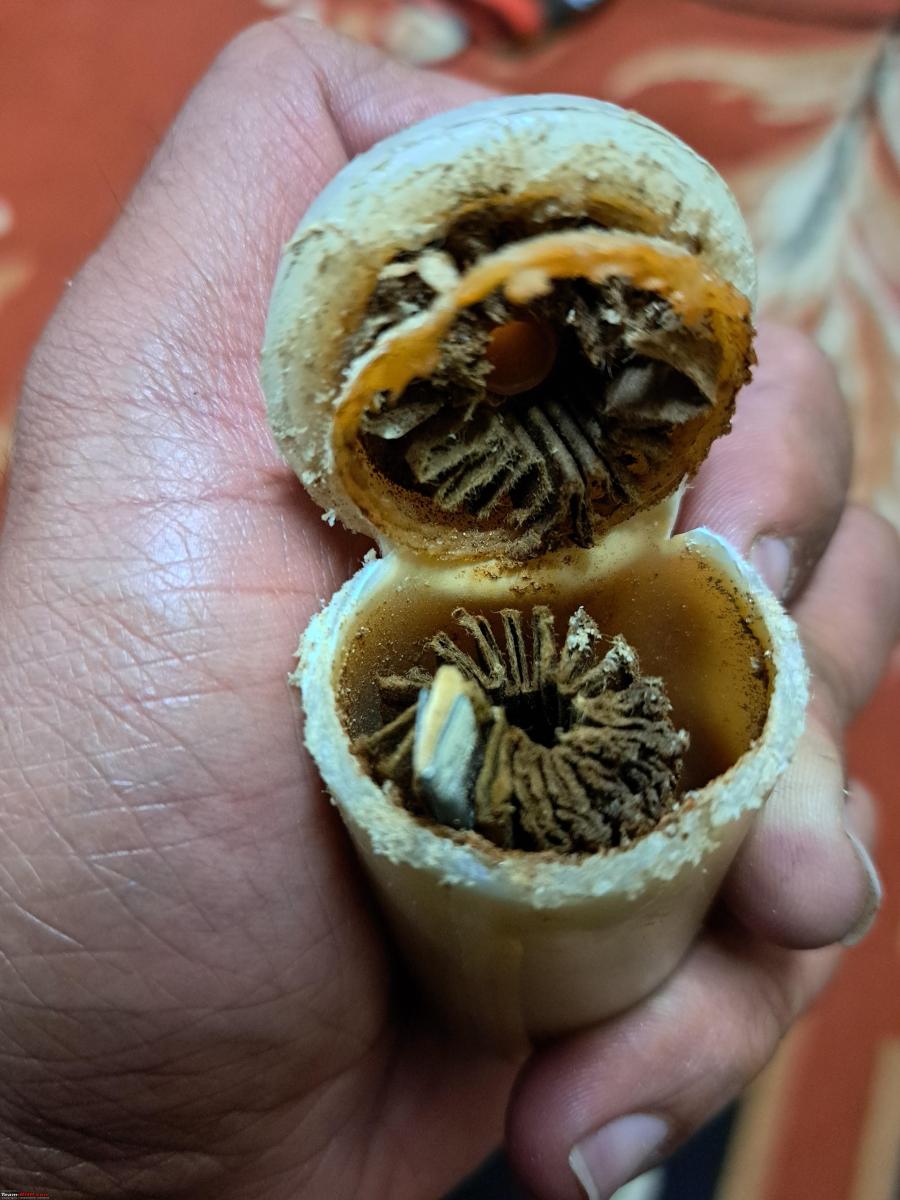
Keeping aside the hacksaw. A little about this filter. This is a 3000 km ONLY run fuel filter. Absolutely no performance issues, it was doing its duty as it was supposed to to the nick, until I intervened due to my untreated OCD.
If you'll look towards the bottom of the filter housing and the base of the filter where the metal plate is glued to the paper element, you will see minute talc-ish particles. Flexing my neck a little close with my tongue sticking out, I find these were not rust particles but were calcified petroleum impurities along with the petrol itself which has varnished to glory:
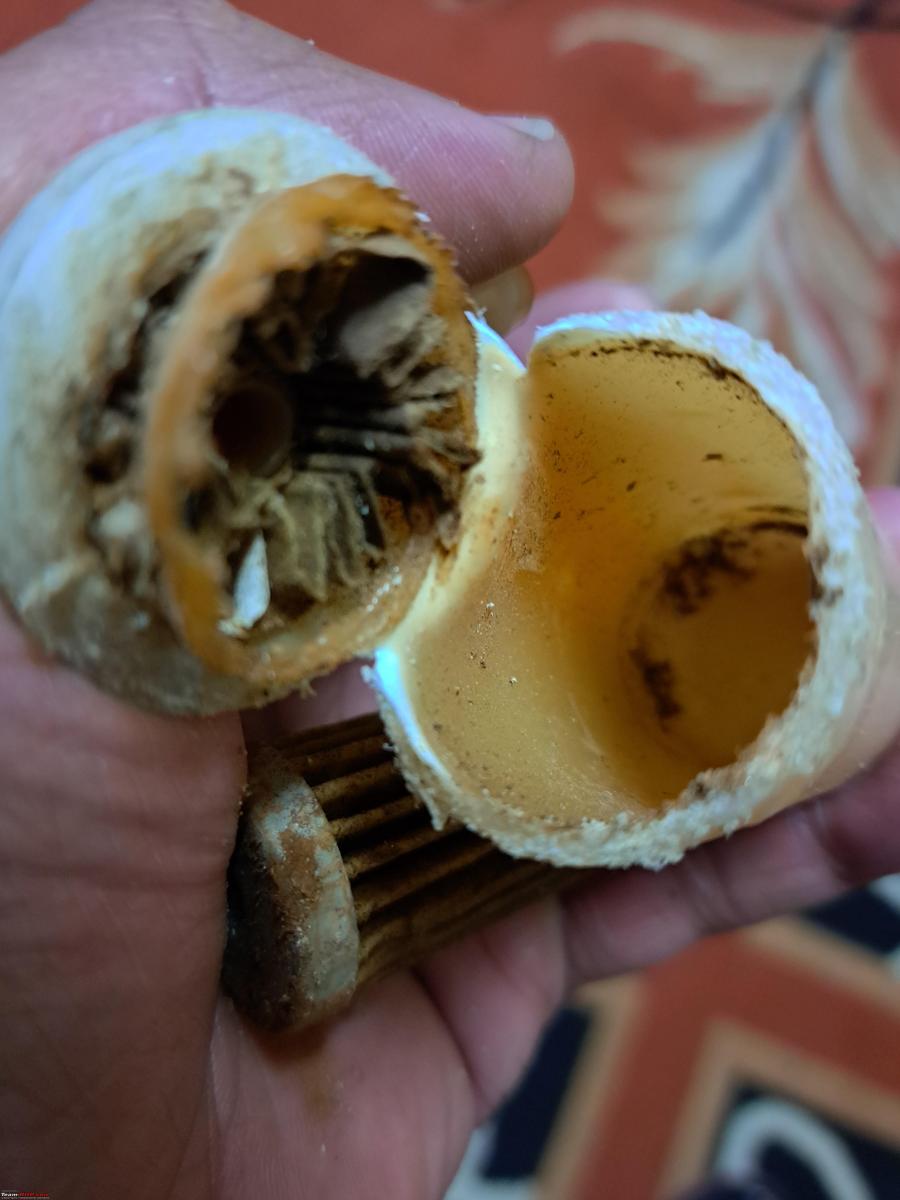
The keen eyed in you would have seen the powdery element sprinkled on my palm. This was just a preview of what was to come tapping the damned paper element.. fine premium petroleum talc:
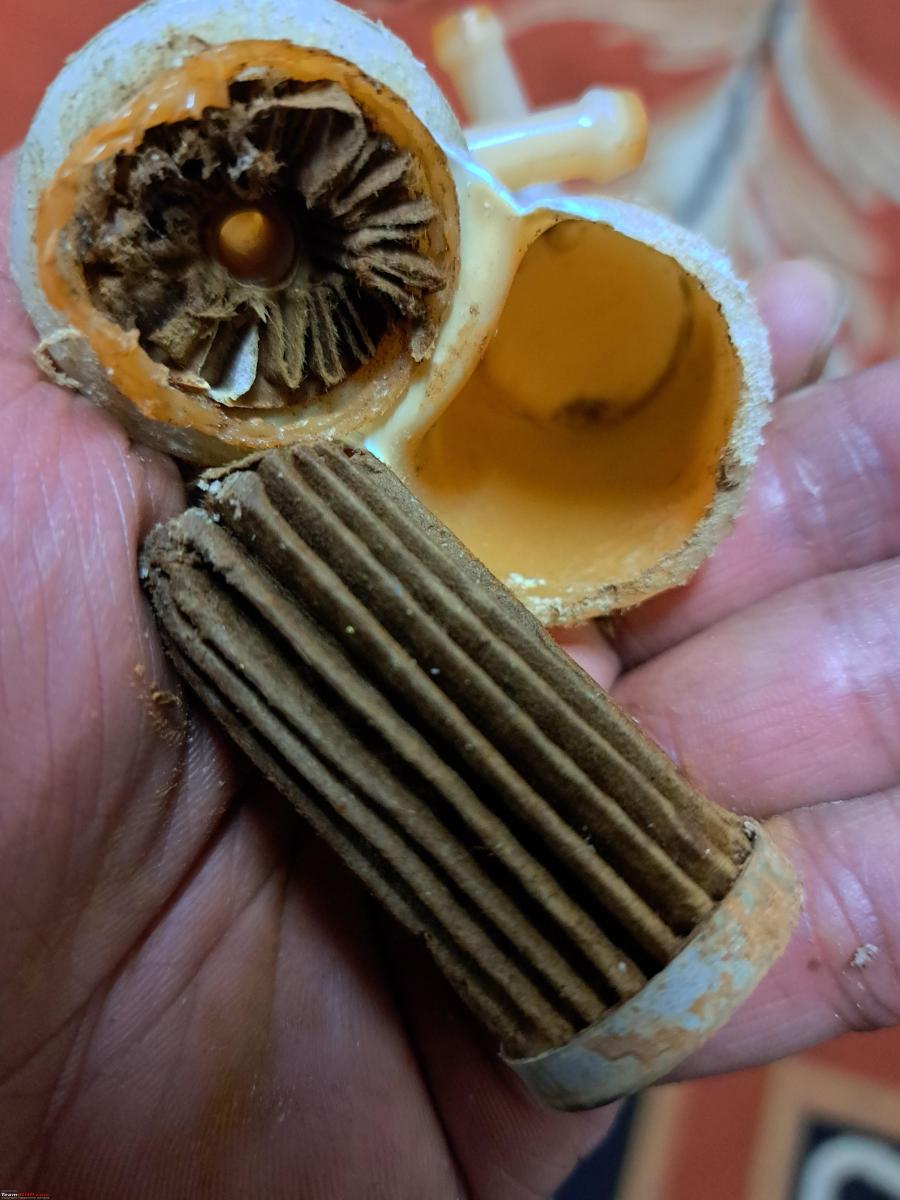
One last view before bidding adieu to the silent hero who works real hard in silence so that we can make all the noise riding... Notice the remnants on my palm! These were sprinkled graciously as soon as I tap the element.. They say a lot don't they:
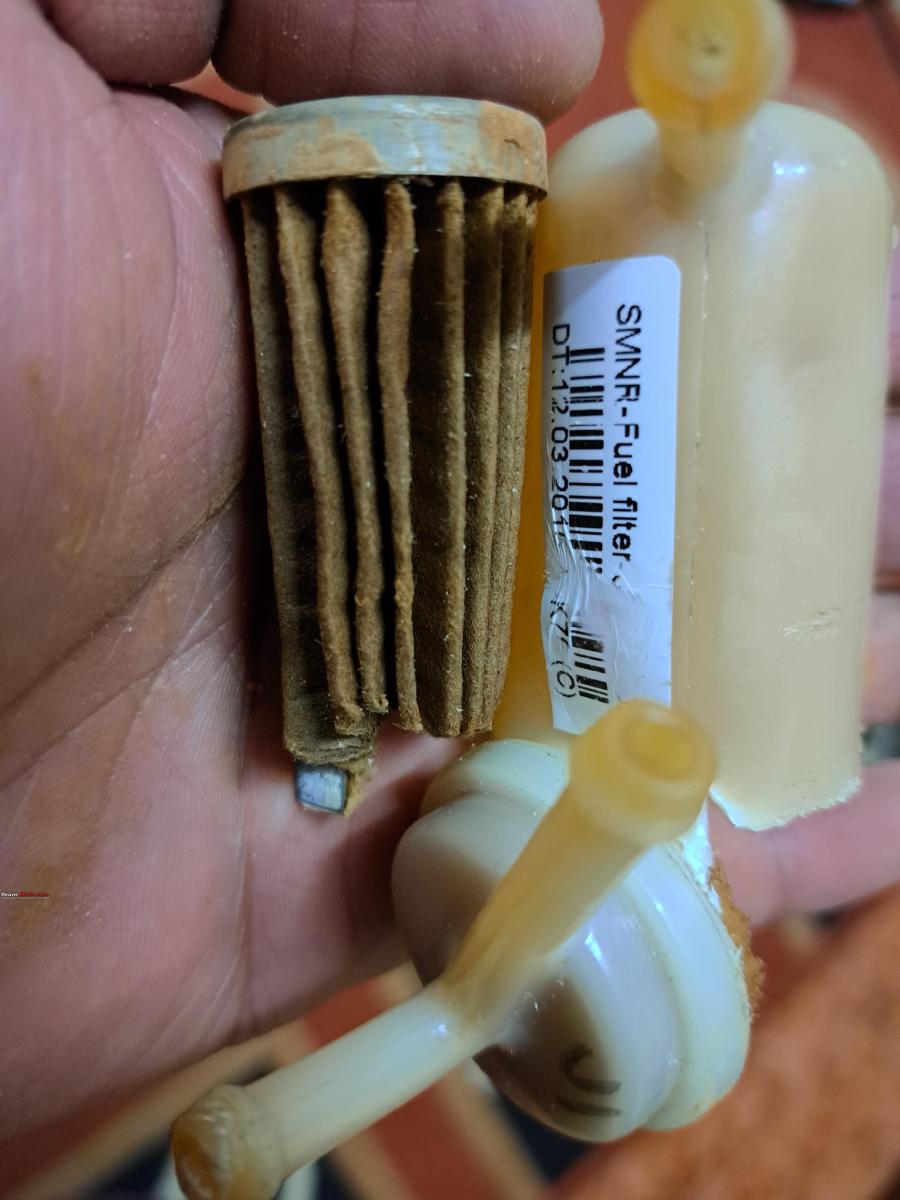
The prime reason for me jotting this seemingly side-swiped aspect of a fuel feed system is to help people understand that it's elements like these that do an exceptionally hard job behind to give you what it takes, when you need it.
The key takeway here for me was that with improved fuel chemistry and more older vehicles plying on the road, this prods us to take a protracted look at how modern fuel can, in a way cause sinister issues, right from bloated/softened rubber hoses, accumulating water inside the fuel tank, melting the glue off of crucial filter/pump housings and what not.
It's time to take care of our gasoline brethren, especially yesteryear ones, motorcycles or cars for that matter, so that they don't fade into time.. which my gut says with flex fuel engines on the floor, the good old ones will eventually fade into the abyss of time.
Now, after cleaning all this DIY muck, it was time to reflect..
It was a fun learning curve for me, why? The fact that this filter looked sinister was exactly what prompted me to do this late night dissection and was extremely chuffed that I did. Trust not your fuel station, but your fuel filter, because as I said in the beginning, the Devil is the Details.
I sincerely hope this helps us all petrolheads and thanks for sticking till the end.
Check out BHPian commens for more insights and information.



